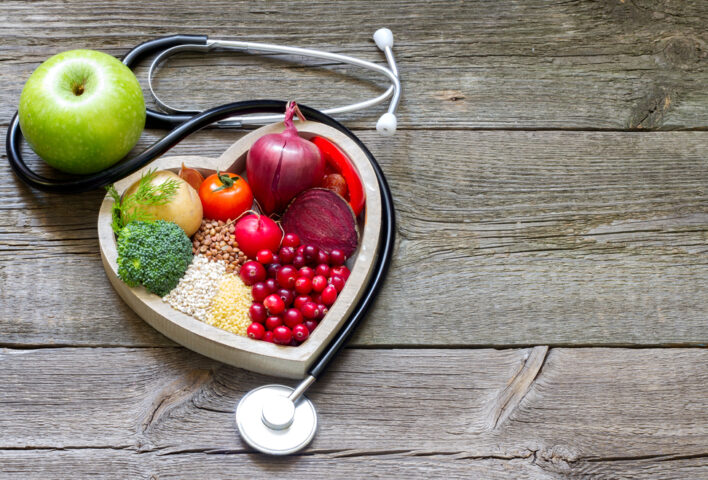Ask the Dietitian: Heart health
Keeping our hearts healthy is easy if we eat and live in the right way. Registered dietitian Rachael Hunter explores how.

Our hearts are constantly busy pumping blood around our bodies and beating around 100,000 times a day. What can we do to help keep this important muscle in good condition?
Salt
Too much salt can lead to high blood pressure which puts a strain on our arteries and therefore impacts our heart. Most of us may already know that we shouldn’t have more than 6g (about a teaspoon) of salt a day, and that often we have more than this, but how can we reduce it?
One key change is to reduce added salt at home when cooking. Using herbs and spices instead can reduce the need to use salt, and gradually reducing it over time will give your tastebuds a chance to adjust. One tip is to keep in mind that we often need to use larger amounts of herbs and spices compared to the equivalent in salt to boost the flavour of dishes. Taste as you go to help make sure you get the flavours right.
When it comes to the foods we buy, there are obviously salty foods such as crisps and processed foods like ready meals, but foods we eat daily can also be high in salt such as bread and breakfast cereals. These foods still play an important role in the diet, so it’s important to check the label, for example on the front traffic light coding, to track how many foods you eat that are ‘red’ for salt.
Fibre
Rather than always focusing on what we need to eat less of, I also like to think about what we should be eating more of, and this includes fibre. Studies show that diets high in fibre are linked to a lower risk of heart disease, which is good news for our hearts. Ways to increase fibre in the diet include:
- Five a day – fruits and vegetables are a great source of fibre, particularly if the skin (when edible) is left on.
- Switching to wholegrain seeded bread, brown rice and wholegrain breakfast cereals.
- Having beans, pulses, and lentils regularly. Not only are they a great source of fibre, but they will also give you a protein boost.
Fats
Some fat is needed in the diet, but when it comes to heart health the one to look at reducing is saturated fat. Foods high in saturated fat include butter, cakes, biscuits, and pastries as well as some of the more highly processed meat alternatives. Reducing these in the diet tends to help improve cholesterol levels, therefore helping to look after our hearts.
Being Active
While not strictly food-related, being active is vital for a healthy lifestyle. Exercise reduces the risk of heart disease through a variety of actions, including helping to reduce blood pressure and improve cholesterol levels. The guidance for adults is to aim for 150 minutes of moderate-intensity activity or 75 minutes of vigorous activity a week, but do not worry if you are miles away from this. Any change and increase in how active you are will lead to a benefit in health, and often the more we start to do the more we feel we can do. Getting started is often the hardest part.
